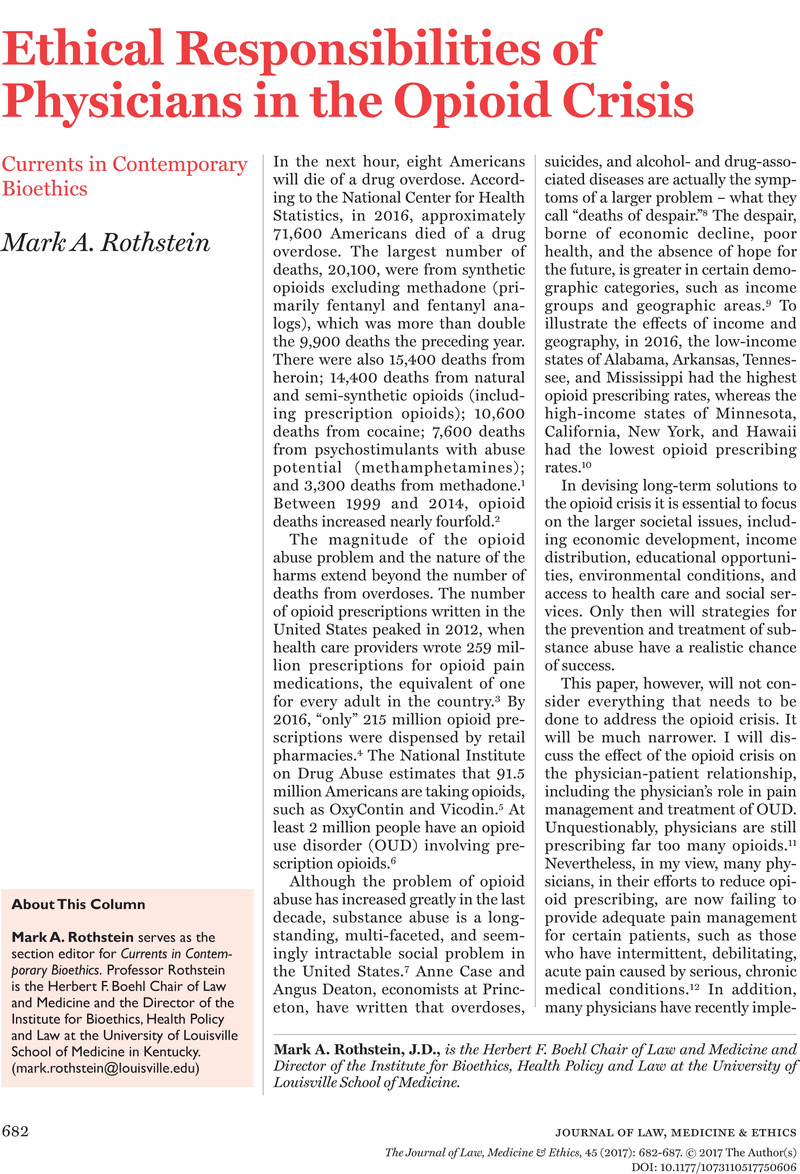Crossref Citations
This article has been cited by the following publications. This list is generated based on data provided by Crossref.
Saloner, Brendan
McGinty, Emma E.
Beletsky, Leo
Bluthenthal, Ricky
Beyrer, Chris
Botticelli, Michael
and
Sherman, Susan G.
2018.
A Public Health Strategy for the Opioid Crisis.
Public Health Reports®,
Vol. 133,
Issue. 1_suppl,
p.
24S.
Bandini, Julia I.
Courtwright, Andrew M.
Rubin, Emily
Erler, Kimberly S.
Zwirner, Mary
Cremens, M. Cornelia
McCoy, Thomas H.
and
Robinson, Ellen M.
2020.
Ethics Consultations Related to Opioid Use Disorder.
Psychosomatics,
Vol. 61,
Issue. 2,
p.
161.
Rothstein, Mark A.
and
Irzyk, Julia
2022.
Physician Liability for Suicide after Negligent Tapering of Opioids.
Journal of Law, Medicine & Ethics,
Vol. 50,
Issue. 1,
p.
184.
Smith, Alan David
2022.
Exploring opioid addictions and responsibilities: almost lost in the midst of the Covid-19 pandemic.
International Journal of Human Rights in Healthcare,
Vol. 15,
Issue. 1,
p.
41.
Bartholomew, Joseph B.
and
Bute, Jennifer J.
2023.
Exploring Internal Medicine Interns’ Educational Experiences on Opioid Addiction: A Narrative Analysis.
Health Communication,
Vol. 38,
Issue. 1,
p.
169.
Durham, Levi
2024.
When Can Physicians Fire Patients with Opioid Use Disorder for Nonmedical Use of Prescription Medications?.
The Journal of Clinical Ethics,
Vol. 35,
Issue. 1,
p.
65.



